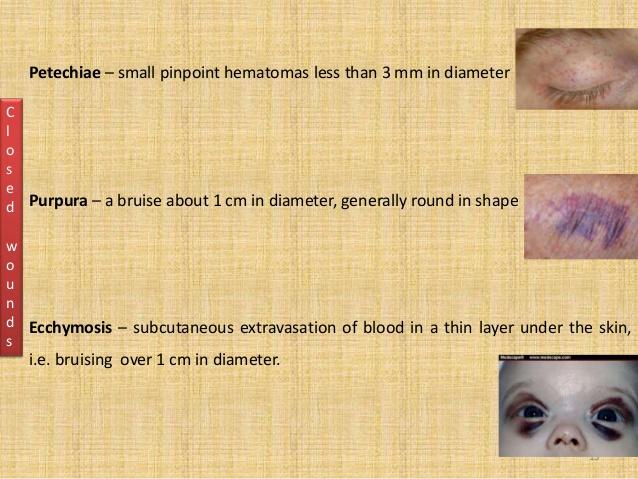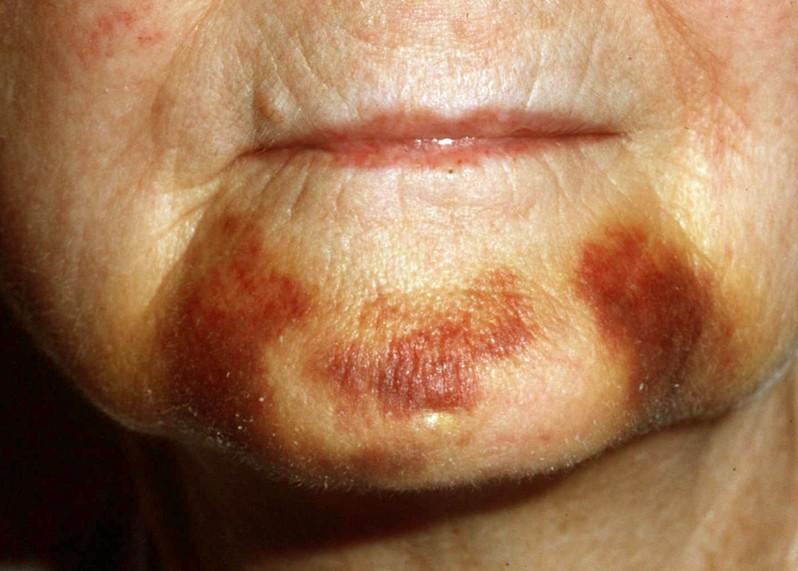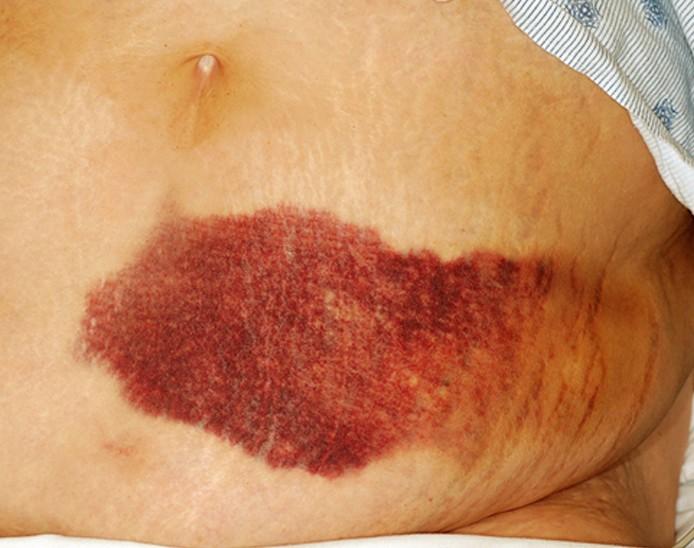What is Ecchymosis?
Ecchymosis is a state whereby blood is diverted into the thin skin layer caused by rupture of blood vessels. The condition is also defined as a subcutaneous purpura whose diameter exceeds 1 cm. Ecchymosis is commonly characterized by skin discoloration of reddish or bluish color.
Most of the times it is mistaken for bruises, which have similar manifestations. Bruises are caused by extravasation of blood into the skin layer as a result of trauma on the body while the latter is as a result of basic medical conditions.
Difference Between Ecchymosis and Contusion
The terms ‘contusion’ and ‘bruise’ are used interchangeably, and while a bruise refers to a superficial injury occurring as a result of impact with laceration or slash, on the other hand, contusion refers to an injury occurring without having a cut or break in the skin.
Ecchymosis causes the skin to discolor because of bleeding occurring underneath the skin and while this situation may occur as a result of blunt injury, it may also be caused by medical conditions such as leukemia, liver cirrhosis, and renal failure.
Difference Between Hematoma and Ecchymosis
Ecchymosis is classified as a degree of hematoma (clotted blood within the tissues that forms a solid swelling) that is larger in diameter. A smaller version hematoma is called the petichae. There are differences between hematoma and ecchymosis, some include:
| Hematoma | Ecchymosis |
| Occurs in the skin layer, different organs as well as the mucous membrane | Form only in thin skin layer and mucous membrane (such as the mouth) |
| It has a three dimensional feature | Flat in appearance |

Fig.1 illustrations on different types of hematomas
Symptoms
- Reddish or purplish discoloration on the skin
- The discolored patch is bigger than a 1cm in diameter
- Surrounding skin around the ecchymosis site may become inflamed
- In some patients there may be pain at the affected site
- Depending how severe the ecchymosis may spread to nearby sites

Fig. 2 manifestation of ecchymosis on the skin
What Causes Ecchymosis?
Ecchymosis in itself is neither a condition nor a disorder but is an indicator of some medical conditions which need attention. It poses as a symptom to one or more critical conditions.
Ecchymosis can manifest as a mild inflammatory illness or could be more complex. A blunt trauma is considered a major cause of the discoloration of the skin. Medical conditions that can lead to ecchymosis are:
Liver cirrhosis
Various liver complications lead to the abnormal functioning and structure of the organ. This condition leads to formation of fibrosis at the bone marrow in a process known as myelofibrosis. The condition affects blood cells production, which alters the composition of the blood leading to ecchymosis.
Leukemia
It is a blood disorder that not only affects blood cells but also the tissues. This malignancy influences the production of more white blood cells which in turn increases the chances of ecchymosis to develop. Symptoms of leukemia include ease of getting bruised which is followed by bleeding.
Acute renal failure
When the kidney is unable to perform its normal functions, wastes are not excreted from the body. This causes accumulation of harmful substances in the body which could result into ecchymosis.
Multiple myeloma
It is generally known as cancer of the plasma that is found in the bone marrow. Cancer is usually characterized by the abnormal growth of the cells and in this case the overgrowth leads to blood aberration that causes the hematoma.
Grey Turner’s Syndrome
Apart from illnesses there are disorders which could cause formation of ecchymosis. This is the discoloration of the skin area between the rib and hip that is bluish or purplish in color. Reasons for this syndrome include the abdominal cavity bleeding and retroperitoneal hemorrhage.

Fig. 3 positioning of ecchymosis in Grey Turner’s syndrome
Other causes that are neither ailments nor disorders include:
- Waxing at beauty salons (for people with sensitive skin)
- Allergic reactions
- Medicines that are for blood thinning e.g. heparin
- Septicemia
- Skin that is ageing (for older people)
When Do You Contact A Physician?
You may want to contact your doctor if you notice one or more of the following:
- When bleeding occurs for no reason
- Appearance of ecchymosis patches that do not disappear for about a week
- Reddening of the ecchymosis patches
- Inflammation that could be painful
- Quick spread of the patches in a few days
Treatment of Ecchymosis
Ecchymosis may be painful or painless depending on the extent of damage. If painless, home remedies work just fine but if the patient is under duress medical services should be sought. Some of the treatments that can work include:
Pain relievers
Such as ibuprofen together with other analgesics could be effective in reducing pain related to ecchymosis. Consult your doctor and do not go impulse buying of drugs over the counter. Always seek for medical advice.
Elevation
Raising the affected site enhances blood circulation and promotes good venous return. This is an effective treatment of the condition.
Ice massage
When you get a black eye, application of ice always works wonders. This is applicable for ecchymosis too because vasoconstriction is facilitated and the spread to the nearby site is prevented.
Rest
Tissue repair is well facilitated through rest. Patients with ecchymosis need to take rest so that the healing process is enhanced.
Physical exercises
Light exercises can ease the flow of blood from the deposited skin layer. The physical activities should not be too strenuous as it may elevate the situation. Seek medical advice for the type of exercises you could do.
Massage and slight pressure
Applying slight pressure or massaging the affected site helps to reduce the likelihood of bleeding. Be careful not to use force because it could cause more harm than good.
Get treatment
Ecchymosis is an indicator of other ailments such as leukemia. For this reason you should get treated so that the reddish/bluish/purplish patch will dissipate.
Home Remedies
When battling with this condition, the diet you observe should be strictly balanced because you need to recover. Ingredients to healthy skin include:
- Plenty of water- everyone needs to be hydrated for the normal functioning of the body. From digestion to circulation all should be working at their optimum. Apart from water, go for other healthy fluids such as fruit and vegetable juices.
- Garlic and onions should never miss your diet as they have natural microbial qualities that could enhance the healing process. You can use them in your cooking or eat them raw in a vegetable salad.
- Never miss turmeric because it is the antidote for inflammation brought about by the ecchymosis. You can take it in any combination that you want. Mix it with honey or combine it in your juices but make sure you have it.
- Do not forget your fruits and vegetables. Have fruits also vegetables that are rich in Vitamin C and iron. These ensure tissue building which will facilitate the healing process. Options such as oranges, lemon, cauliflower and broccoli are good to start with.
Links
- https://www.slideshare.net/Dravneet1/wound-repair-43272637
- http://mddk.com/ecchymosis.html
- https://www.healthwhoop.com/ecchymosis/
